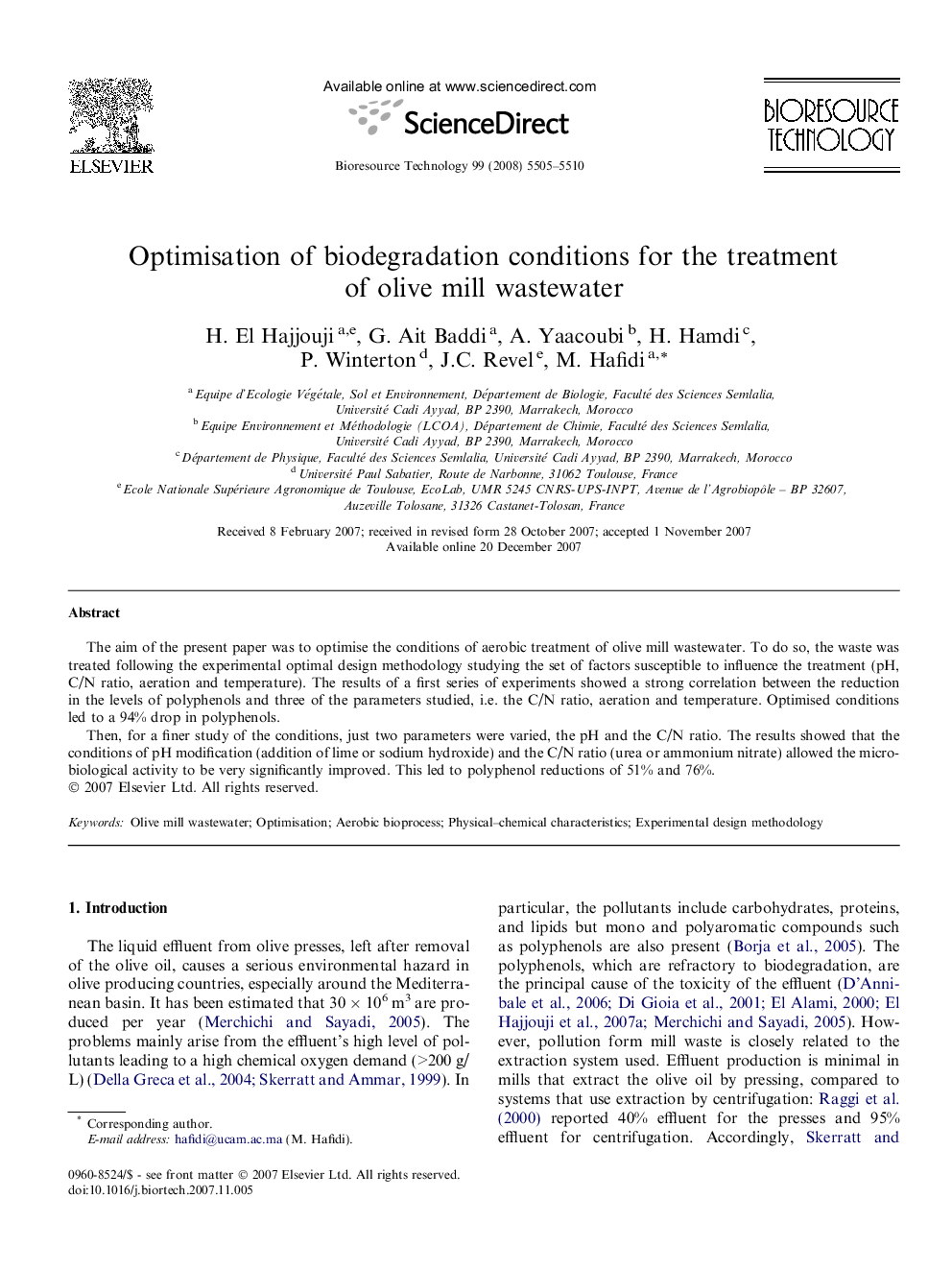| Article ID | Journal | Published Year | Pages | File Type |
|---|---|---|---|---|
| 685104 | Bioresource Technology | 2008 | 6 Pages |
The aim of the present paper was to optimise the conditions of aerobic treatment of olive mill wastewater. To do so, the waste was treated following the experimental optimal design methodology studying the set of factors susceptible to influence the treatment (pH, C/N ratio, aeration and temperature). The results of a first series of experiments showed a strong correlation between the reduction in the levels of polyphenols and three of the parameters studied, i.e. the C/N ratio, aeration and temperature. Optimised conditions led to a 94% drop in polyphenols.Then, for a finer study of the conditions, just two parameters were varied, the pH and the C/N ratio. The results showed that the conditions of pH modification (addition of lime or sodium hydroxide) and the C/N ratio (urea or ammonium nitrate) allowed the microbiological activity to be very significantly improved. This led to polyphenol reductions of 51% and 76%.
